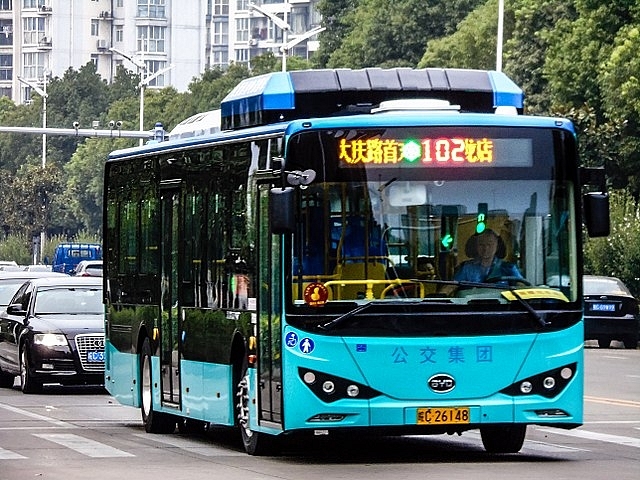Insta
Electric Vehicle Push: Chinese Electric Bus Manufacturers Look To Set Up Base In India

A BYD Electric Bus in Bengbu, China (<a href="https://commons.wikimedia.org/wiki/User:DKMcLaren">DKMcLaren</a>/Wikimedia Commons)
With an eye on India’s planned transition to using only electric vehicles by 2030, several Chinese bus manufacturers have evinced interest to start operations in India, reports Mint. At least five manufacturers including BYD and Changsha Sunda New Energy Vehicles Technologies have had discussions with the Automotive Component Manufacturers Association (ACMA) and the Society of Manufacturers of Electric Vehicles (SMEV) said the report.
Shenzen-based BYD had earlier supplied buses to the Bangalore Metropolitan Transport Corporation (BMTC) in 2014 and currently offers buses in India through its partnership with Hyderabad-based Goldstone group. This partnership has already supplied buses that are used in Mumbai and Himachal Pradesh.
Persons aware of the development said that Chinese electric vehicle (EV) manufacturers see a huge potential in India with the government’s plans to go completely electric by 2030 and also said that battery-operated buses were slowly seeing less traction in China.
They also said that since many of these manufacturers had the capacity to build 10,000 buses per year, it would help Indian suppliers who could tie-up with them.
However, a downside to the entire development is that Chinese firms plan to manufacture these buses in China itself and only assemble them in India, potentially derailing Prime Minister Narendra Modi’s Make In India initiative.
Due to them being assembled in India, they would still be eligible for several of the government’s subsidies but the cost of the bus would still be high, the report added.
Also Read:
Support Swarajya's 50 Ground Reports Project & Sponsor A Story
Every general election Swarajya does a 50 ground reports project.
Aimed only at serious readers and those who appreciate the nuances of political undercurrents, the project provides a sense of India's electoral landscape. As you know, these reports are produced after considerable investment of travel, time and effort on the ground.
This time too we've kicked off the project in style and have covered over 30 constituencies already. If you're someone who appreciates such work and have enjoyed our coverage please consider sponsoring a ground report for just Rs 2999 to Rs 19,999 - it goes a long way in helping us produce more quality reportage.
You can also back this project by becoming a subscriber for as little as Rs 999 - so do click on this links and choose a plan that suits you and back us.
Click below to contribute.
Latest